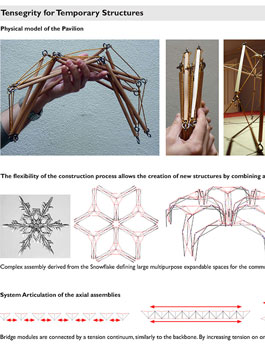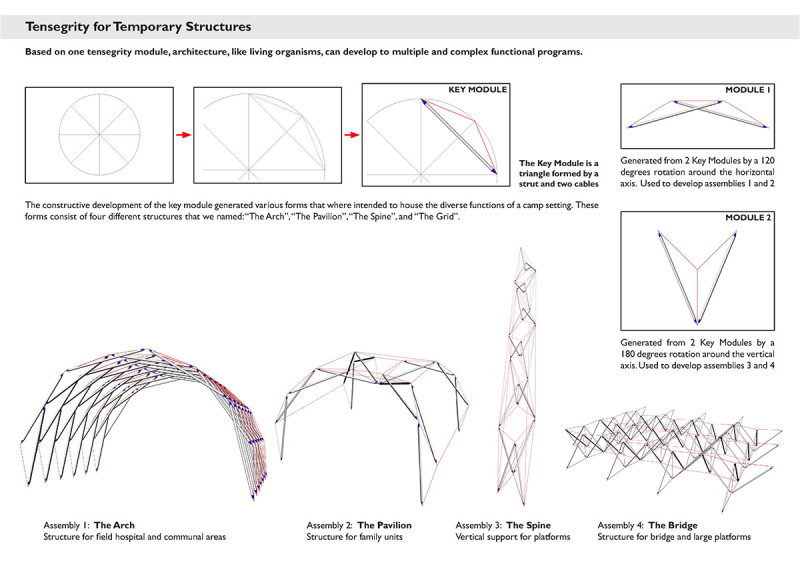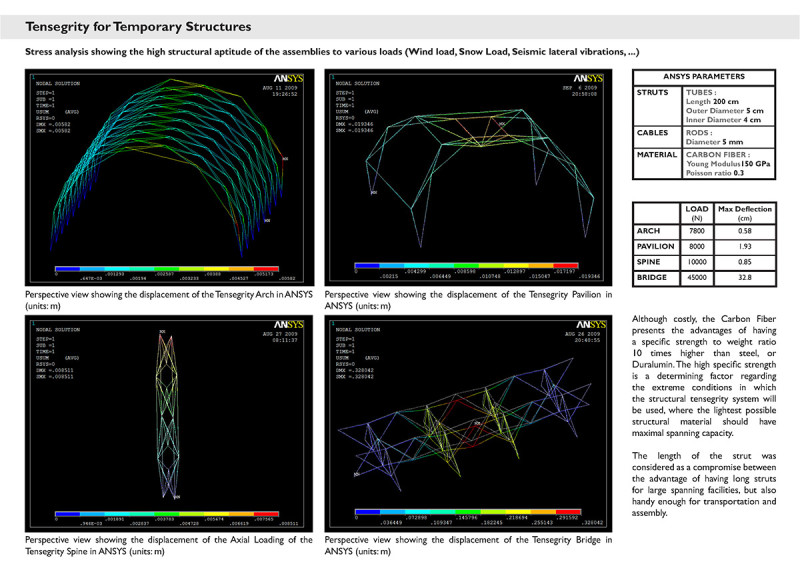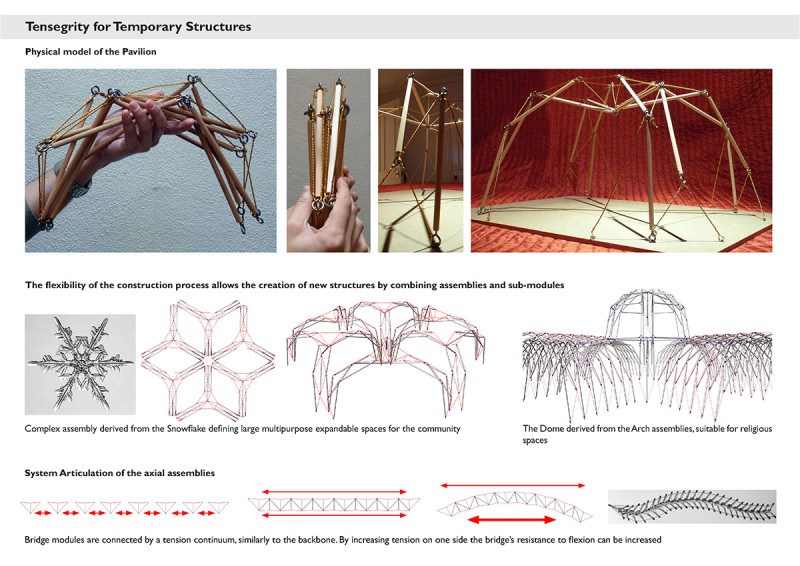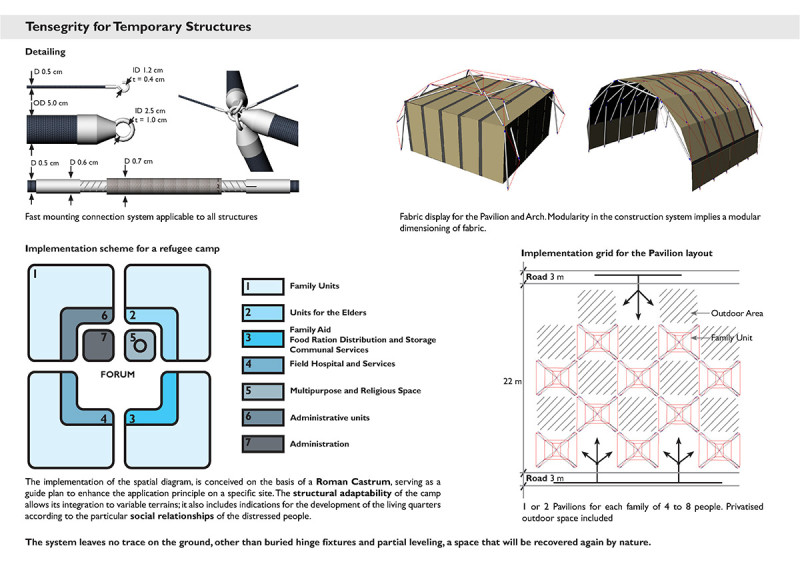When a catastrophe occurs, natural or manmade, the priority is to accommodate distressed people quietly and efficiently. Such situations could occur in areas of impaired accessibility where logistics are limited to man, mule power, and sometimes to helicopters. This raises the need to provide lightweight, flexible structures that are easy to transport, that can be adapted to the required conditions, and configured to sustain different functions.
The successive sequences of this thesis develop a construction system that provides optimal possibilities, allowing the higher ratio of space to weight of materials, easily workable fast mounting techniques, and variable forms and structures ranging from shelters, to community spaces, to bridges…
The need to organize a refugee camp is open to unpredictable configurations, as far as form and scale are concerned. The basic constructive unit should be a simple module that can be developed into various forms while retaining its stability and original characteristics. Two opposite poles determine the limits of such a concept: Simplicity on one side, and complexity on the other.
The aim of this thesis is to conceive an integral constructive procedure founded on a single unit and a development method. The development is assimilated to a geometric equation where changing a parameter is in itself morphogenetic while the system maintains its coherence in the relationship between form and structure. Comparatively, forms as found in nature bear such characteristics, the living cell as part of an organic system is an example. Other examples can be found in crystalline formations where the multiplication of a basic unit leads to different complex configurations. From the unit to the whole, structural continuity should be maintained; its systemic qualities should be applied along with the basic requirements for lightweight, efficient assemblies.
Tensegrity is a structural system that draws its principles from biological characteristics. It promises the most lightweight structures possible using struts for compression and cables for tension just like the living skeleton, where bones are woven in a tensile net of ligaments and muscles. Bones are under compression, and muscles stand for and operate in tension.
Such a versatile constructive procedure can be considered optimized if it follows 3 concepts: Modularity, Adaptability, and Reversibility.
After serving its purpose, the whole camp is taken apart without leaving a trace on the ground. The materials (Struts, cables, fabric) need no maintenance; they are ready for the next rescuing operation.
Different components were developed to cover the needs set for a full scale rescuing operation, providing bridges to establish or restore the transportation system, structures for a field hospital, community spaces including religious, storage and management offices. Different types of tents could be arranged in various patterns to match the anthropological spatial characteristics of the distressed community.


